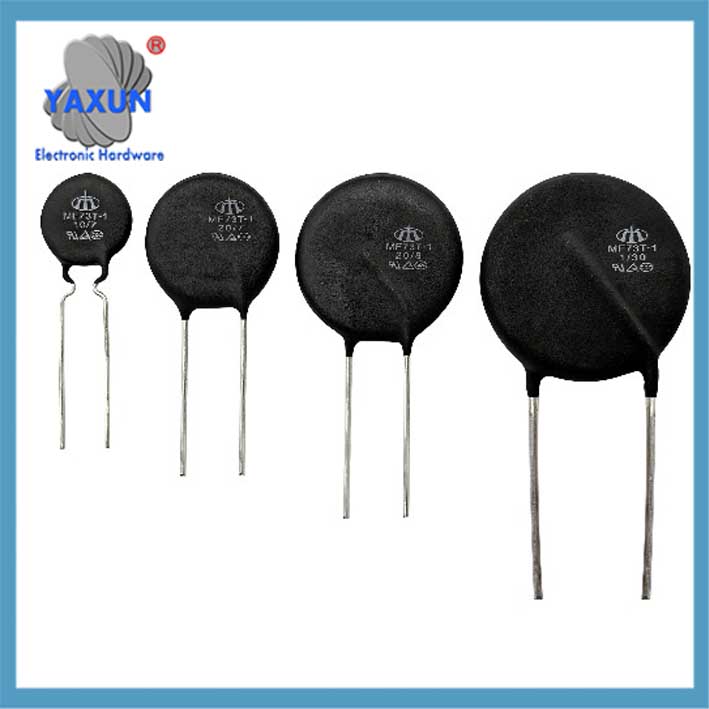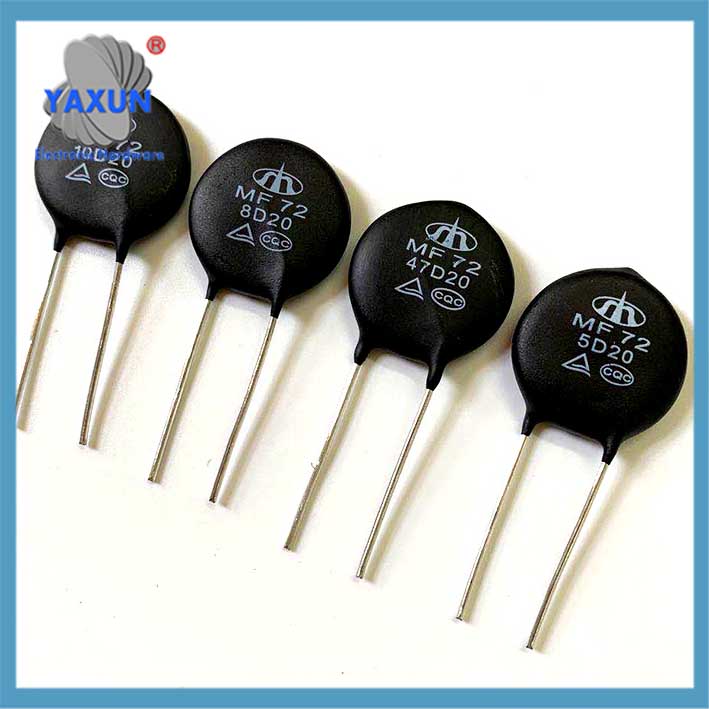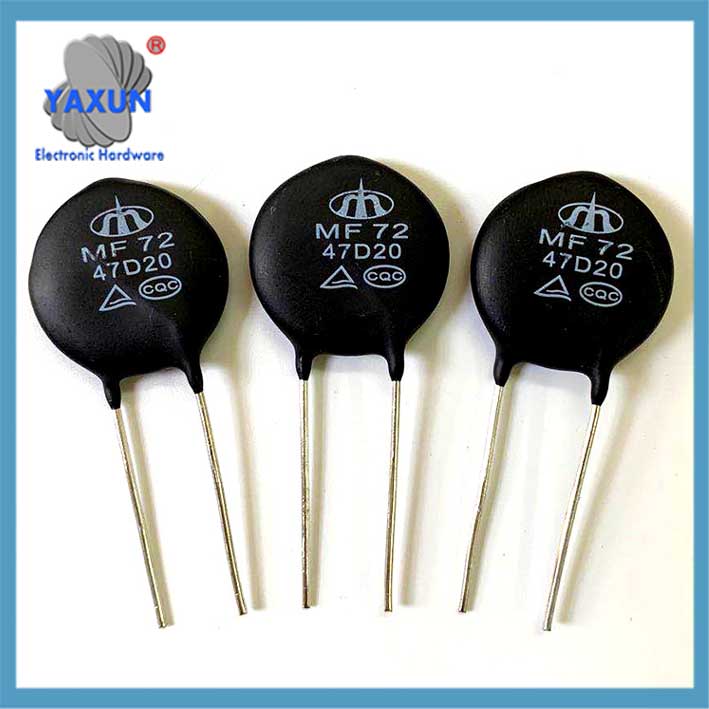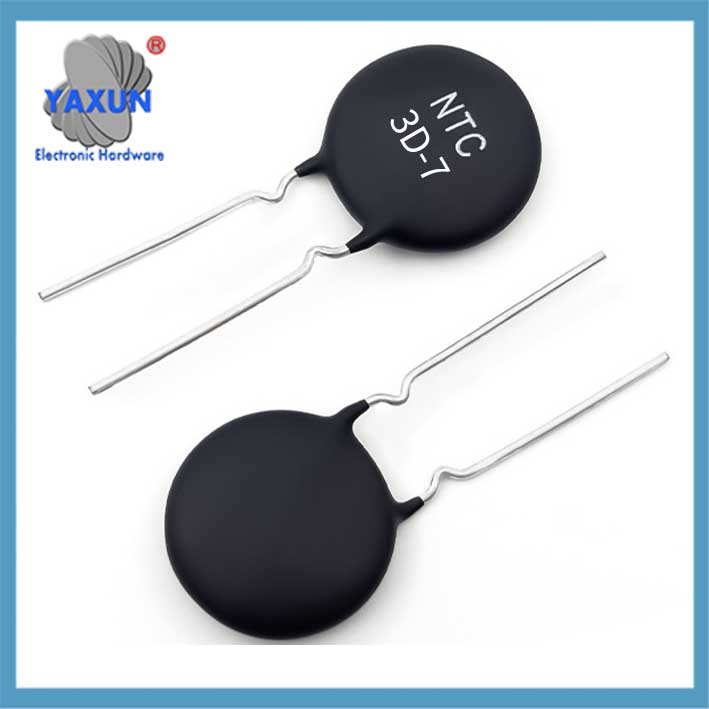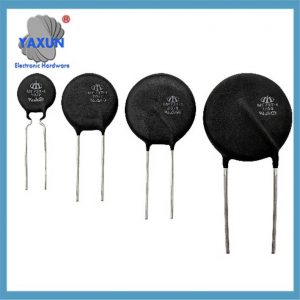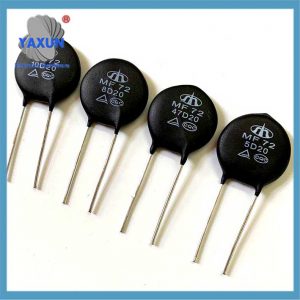Termékkategóriák
- hőbiztosíték 32
- felületre szerelhető biztosítékok 12
- termisztor 36
- PCB-re szerelhető biztosítéktartó 27
- Kábelköteg 6
- Penge biztosítéktartók 17
- termosztát 50
- Elektromos biztosíték 24
- Autóipari hőmérsékleti érzékelő 7
- Termikus áramkör megszakító 22
- Biztosítékdoboz-tartó 36
- Hőmérséklet érzékelő 75
- Hőkapcsoló 68
- Autó biztosíték 20
- Csavarja le a biztosítékokat 8
Termékcímkék
Teljesítménytermisztorok alkalmazása és kiválasztása
Mi az a teljesítménytermisztor? Teljesítmény termisztor, más néven teljesítmény NTC vagy bekapcsolási áramkorlátozó, egy olyan alkatrész, amely az elektromos áramkörök bekapcsolási áramainak elnyomására szolgál. Kihasználja a negatív hőmérsékleti együttható önmelegedését (NTC) termisztor az áramkör bekapcsolásakor fellépő nagy áramok korlátozására.
Power thermistor (mainly negative temperature coefficient NTC type) is a key component for suppressing surge current in electronic circuits. Its main parameters, selection points and application scenarios are as follows:
én. Core functions and principles
Surge current suppression
At the moment of power startup, the NTC resistance value connected in series in the input circuit is high, which can limit the peak current; after power is turned on, the resistance drops rapidly due to heat (power consumption can be ignored), ensuring the stable operation of subsequent circuits.
Negative temperature characteristics
The resistance value decreases exponentially with increasing temperature: R(T)=R0⋅eB⋅(1T−1T0)R(T)=R0⋅eB⋅(T1−T01) (R0R0 is the resistance value at 25℃, BB is the material constant).
How it Works:
High Initial Resistance:
When power is first applied, a power thermistor has a high resistance, which limits the initial inrush current.
Self-Heating:
As the current flows through the thermistor, it generates heat, causing its resistance to decrease.
Resistance Decrease:
The reduction in resistance allows the circuit to draw the necessary operating current without the initial surge.
Előnyök:
Protects Equipment:
By limiting the inrush current, power thermostats prevent damage to sensitive components and equipment.
Reduces Power Loss:
The resistance decrease through self-heating reduces power loss compared to using a fixed resistor.
Energy Savings:
Lowering power loss can lead to energy savings in applications like switching power supplies and other electrical devices.
II.. Key parameters and selection points
| Paraméterek | Definition and selection significance | Typical value/range |
| Rated zero power resistance (R25) | The nominal resistance at 5°C determines the initial surge suppression capability. Számítási képlet: R25≈U2⋅IsurgeR25≈2⋅IsurgeU (UU is the input voltage, IsurgeIsurge is the surge current) | Commonly used 2.5Ω, 5Ó, 10Ω±(15-30)% |
| Maximum steady-state current | The current that can be sustained for a long time at 25℃, needs to be greater than the circuit working current | Depending on the model 0.5A~tens of amperes |
| Residual resistance | The minimum resistance value at high temperature (such as 100℃), affecting the normal power consumption of the circuit | About 1/10~1/20 of R25 |
| B érték | Material constant (measured at 25℃~50℃), determines the slope of the resistance-temperature curve; high B value responds quickly but has high cost | 2000K~6000K |
| Thermal time constant | Response speed index, patch type (such as SMD) can reach seconds | Glass seal/enameled wire type about 10~60 seconds |
Note: Example of model identification MF72-10D-9:
10: R25=10Ω.
D: Disc package
9: 9mm átmérőjű;
III. Tipikus alkalmazási forgatókönyvek
Power supply equipment: Input surge suppression of switching power supply, UPS, adapter;
Lighting system: Anti-shock protection of LED driver, ballast, lighting distribution box;
Ipari berendezések: Motor indítás, industrial power supply, medical instrument;
Háztartási gépek: Air conditioner, refrigerator compressor start protection;
IV. Selection and avoidance guide
Jelenlegi egyezés
The maximum steady-state current needs to be greater than 1.5 times the actual working current to avoid continuous heating and failure.
Heat dissipation design
In high-power scenarios, sufficient spacing or auxiliary heat dissipation is required to prevent excessive temperature rise from causing insufficient residual resistance.
Extreme temperature
The operating temperature range is generally -55℃~+125℃. Glass-sealed models (resistant to 150℃) are preferred in high-temperature environments.
V. Package and performance comparison
| Package type |
Előnyök | Applicable scenarios |
| Epoxy resin | Olcsó költség, good waterproofness | Home appliances, ordinary power supplies |
| Glass package | High temperature resistance (>150℃), gyors reagálás | Ipari berendezések, automotive electronics |
| Surface mount type (SMD) | Kis méret, suitable for high-density PCB | Compact power module |
Tip: Be cautious in frequent switching scenarios – NTC may lose surge suppression capability when insufficient cooling is insufficient. Ebben az időben, a parallel relay bypass can be connected.
Lépjen kapcsolatba velünk
Várom az e-mailedet, belül válaszolunk 12 óra értékes információkkal, amelyekre szüksége van.
 English
English Afrikaans
Afrikaans العربية
العربية বাংলা
বাংলা bosanski jezik
bosanski jezik Български
Български Català
Català 粤语
粤语 中文(简体)
中文(简体) 中文(漢字)
中文(漢字) Hrvatski
Hrvatski Čeština
Čeština Nederlands
Nederlands Eesti keel
Eesti keel Suomi
Suomi Français
Français Deutsch
Deutsch Ελληνικά
Ελληνικά हिन्दी; हिंदी
हिन्दी; हिंदी Magyar
Magyar Bahasa Indonesia
Bahasa Indonesia Italiano
Italiano 日本語
日本語 한국어
한국어 Latviešu valoda
Latviešu valoda Lietuvių kalba
Lietuvių kalba македонски јазик
македонски јазик Bahasa Melayu
Bahasa Melayu Norsk
Norsk پارسی
پارسی Polski
Polski Português
Português Română
Română Русский
Русский Cрпски језик
Cрпски језик Slovenčina
Slovenčina Slovenščina
Slovenščina Español
Español Svenska
Svenska ภาษาไทย
ภาษาไทย Türkçe
Türkçe Українська
Українська اردو
اردو Tiếng Việt
Tiếng Việt
